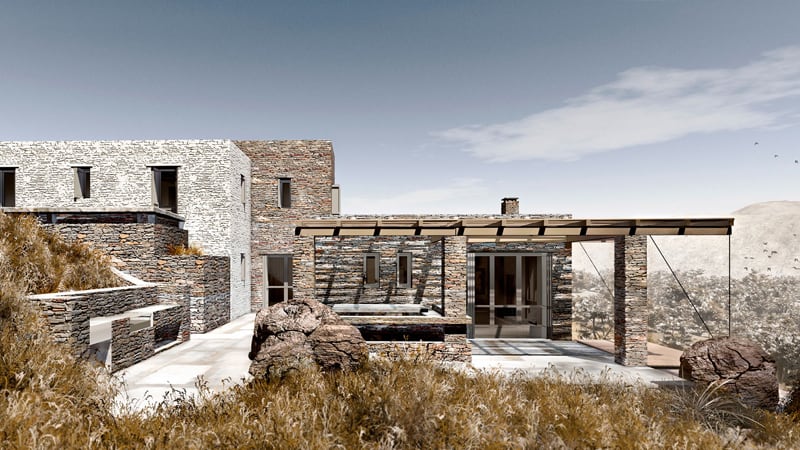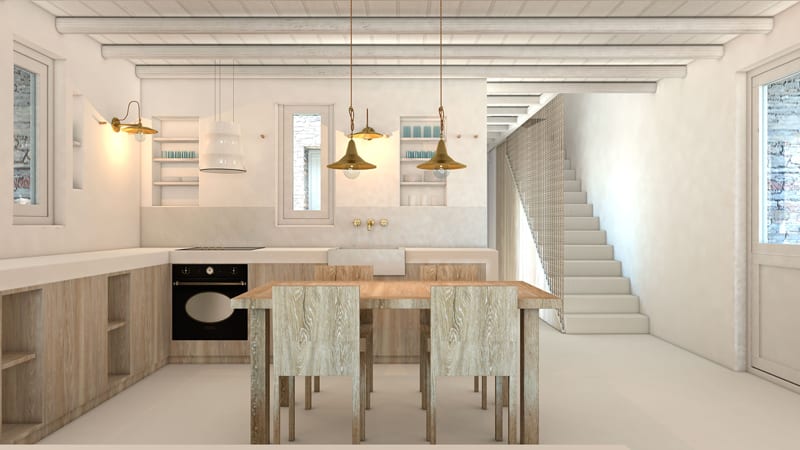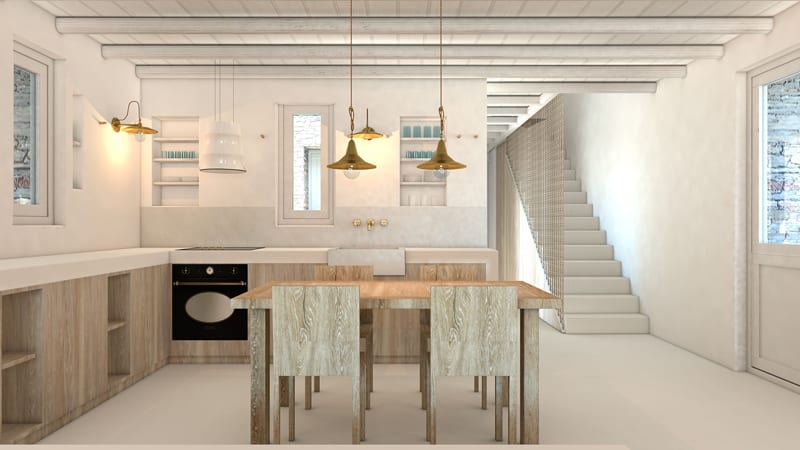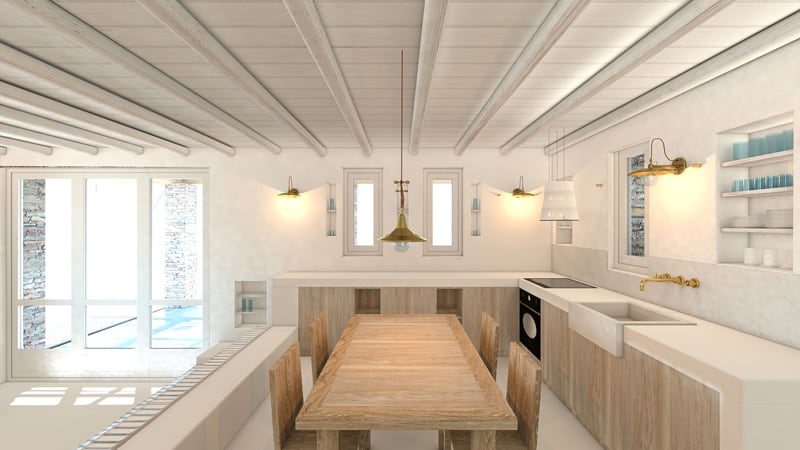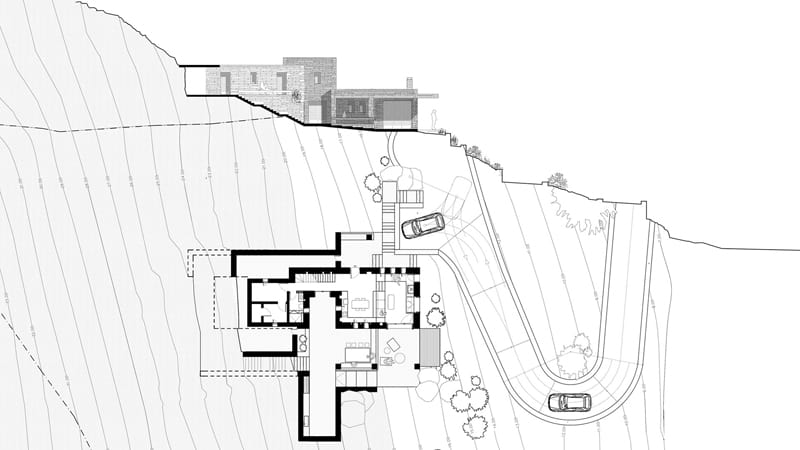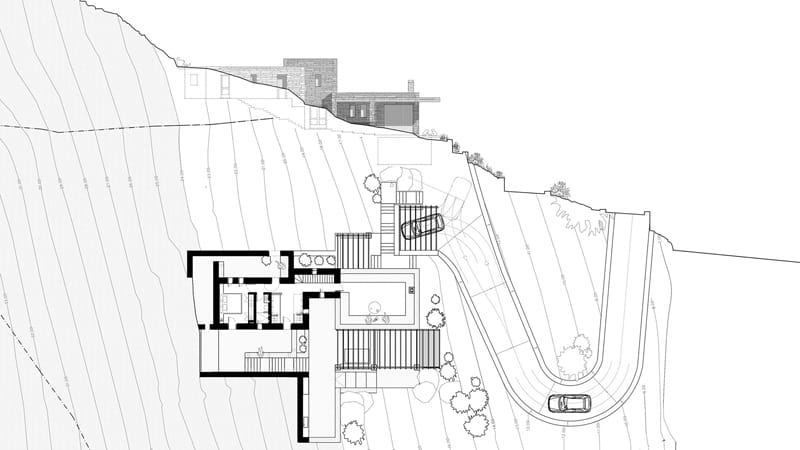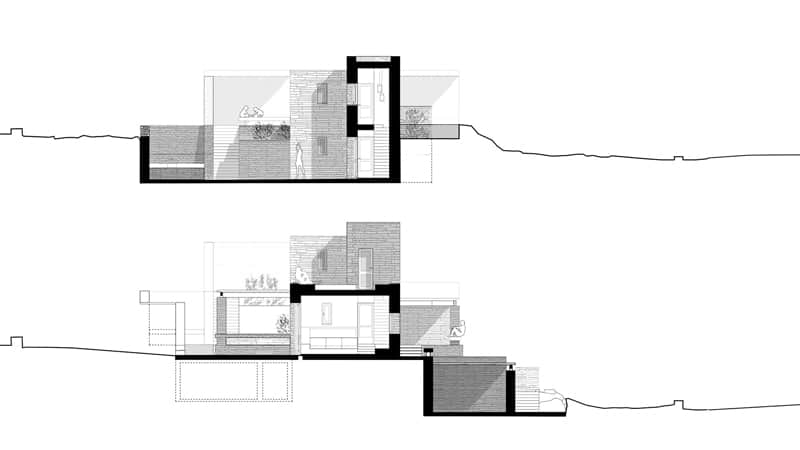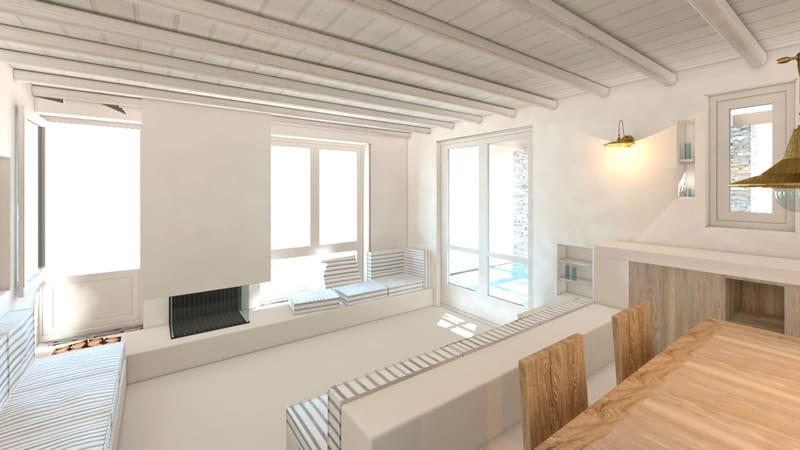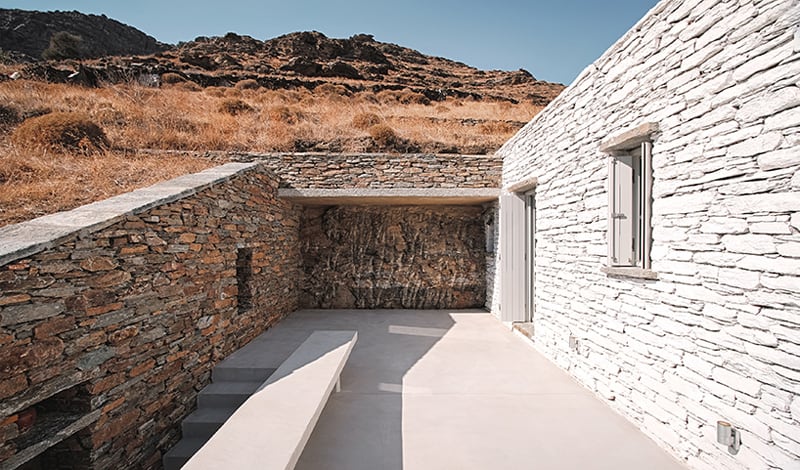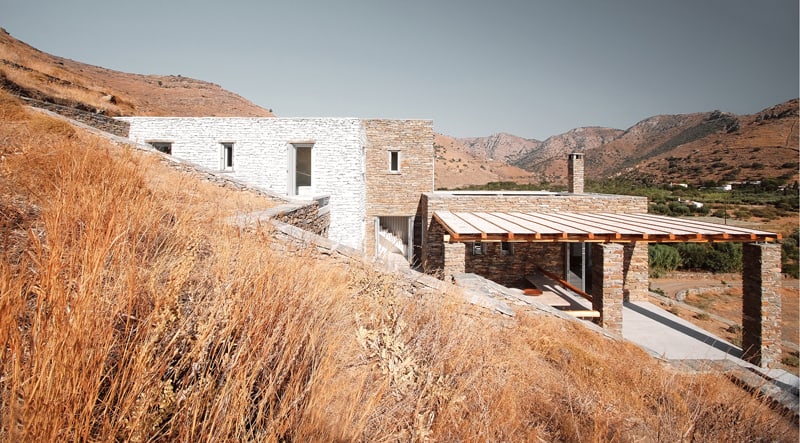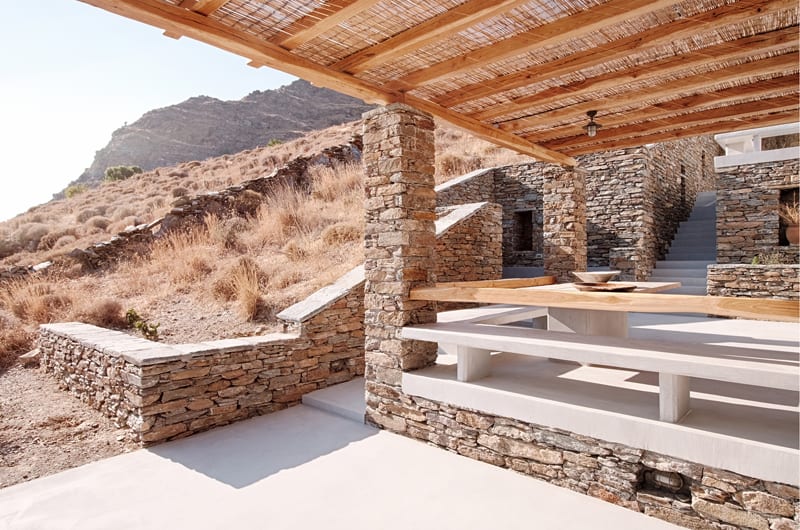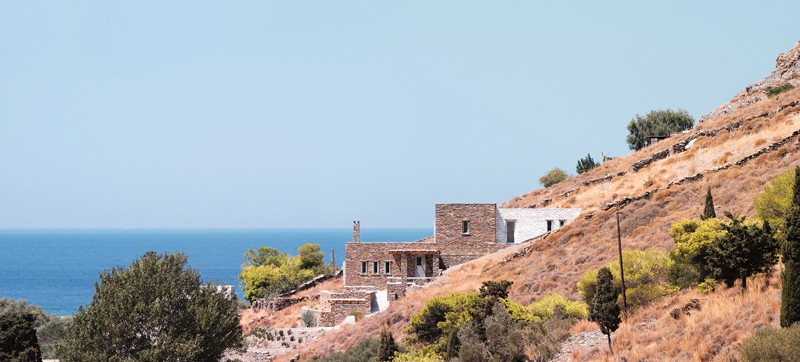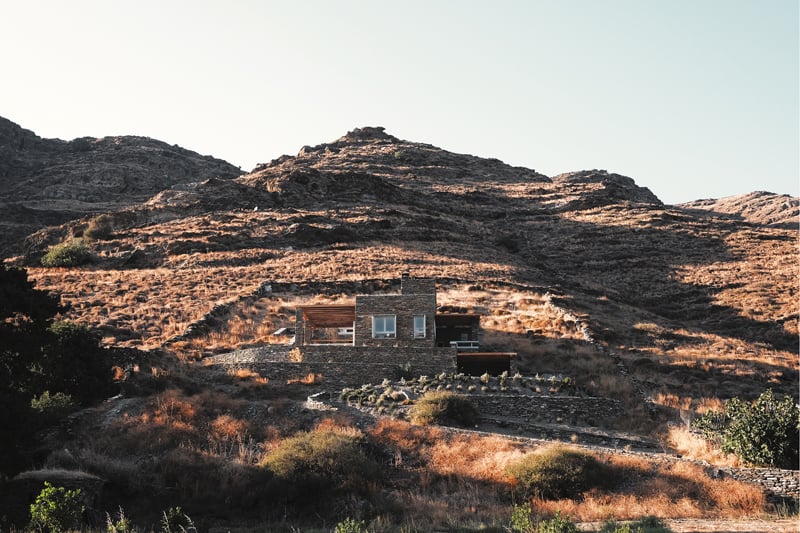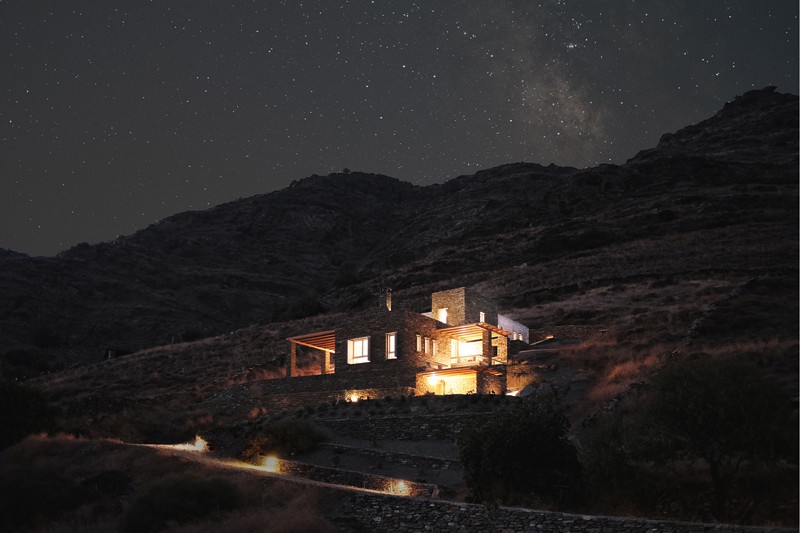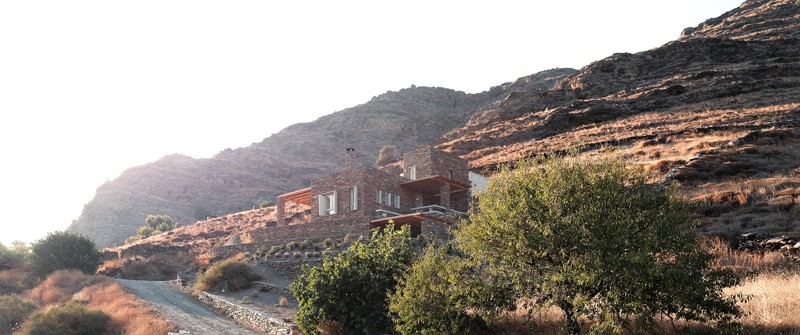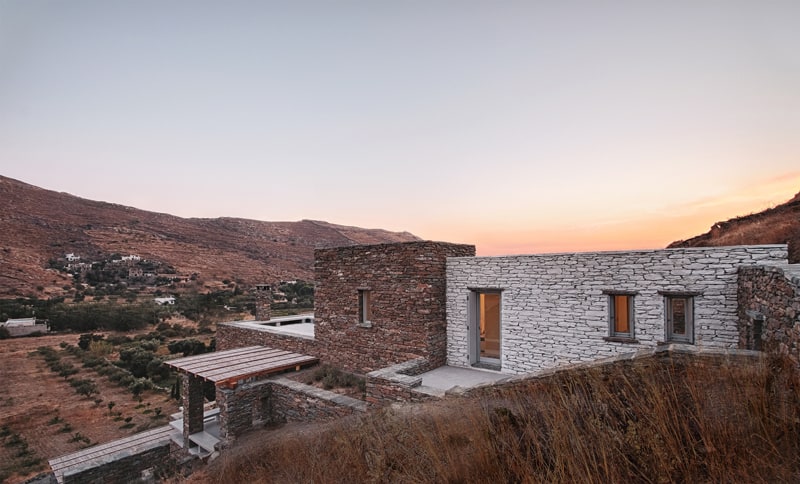The steep ground and the plot’s narrow dimensions determine the pronounced and gradient form of the building which rises from the mountain and over the valley of Poisses, to finally balance itself with the surrounding traditional dwellings and the natural context. This wonderful structure, made with stones carefully crafted against the horizontal micro-cement surfaces and local materials, was designed by Cometa Architects, who worked with the natural cycladic landscape to establish the relationship of the building with the surrounding land.
A summerhouse in Greece developed for the Mediterranean climate, using local materials and sustainable energy saving methods.
We love this summerhouse, developed for the Mediterranean climate, using local materials and sustainable energy saving methods. The steep ground and the plot’s narrow dimensions determine the pronounced and gradient form of the building which rises from the mountain and over the valley of Poisses, to finally balance itself with the surrounding traditional dwellings and the natural context.
The secondary home of a family of four, spreads through 3 volumes which clearly can defined as the seating & kitchen volume, the circulation tower and the sleeping & storaging volume. The principal material chosen is the local stone, carefully crafted against the horizontal micro-cement surfaces.
The experience of the Cycladic landscape is the design’s main concern, expressed through the spatial evolution and relationship of the building with the dramatic land. This is achieved through the traditional method of construction called “kotounto”, a dry, humid-free space between the rock and the building. In such a way, the external spaces, a continuous perimetrical ‘kotoundo’ makes the building sometimes trying to break away from the rock and sometimes to reconcile with it.
Apart from this traditional technique of which is principally used to drain the waters coming from the mountains, leaving walls and foundations dry, the house includes in its design an under-floor heating installation which is generated by the solar heaters installed in the roof. The cooling is achieved from cross ventilation and also an additional under-floor cooling is provided. Finally, the rainwater is collected in the 3 rooftops and stored in an underground reservoir.
also view: 10 Top: Choose a Summer House To Fall In Love With
